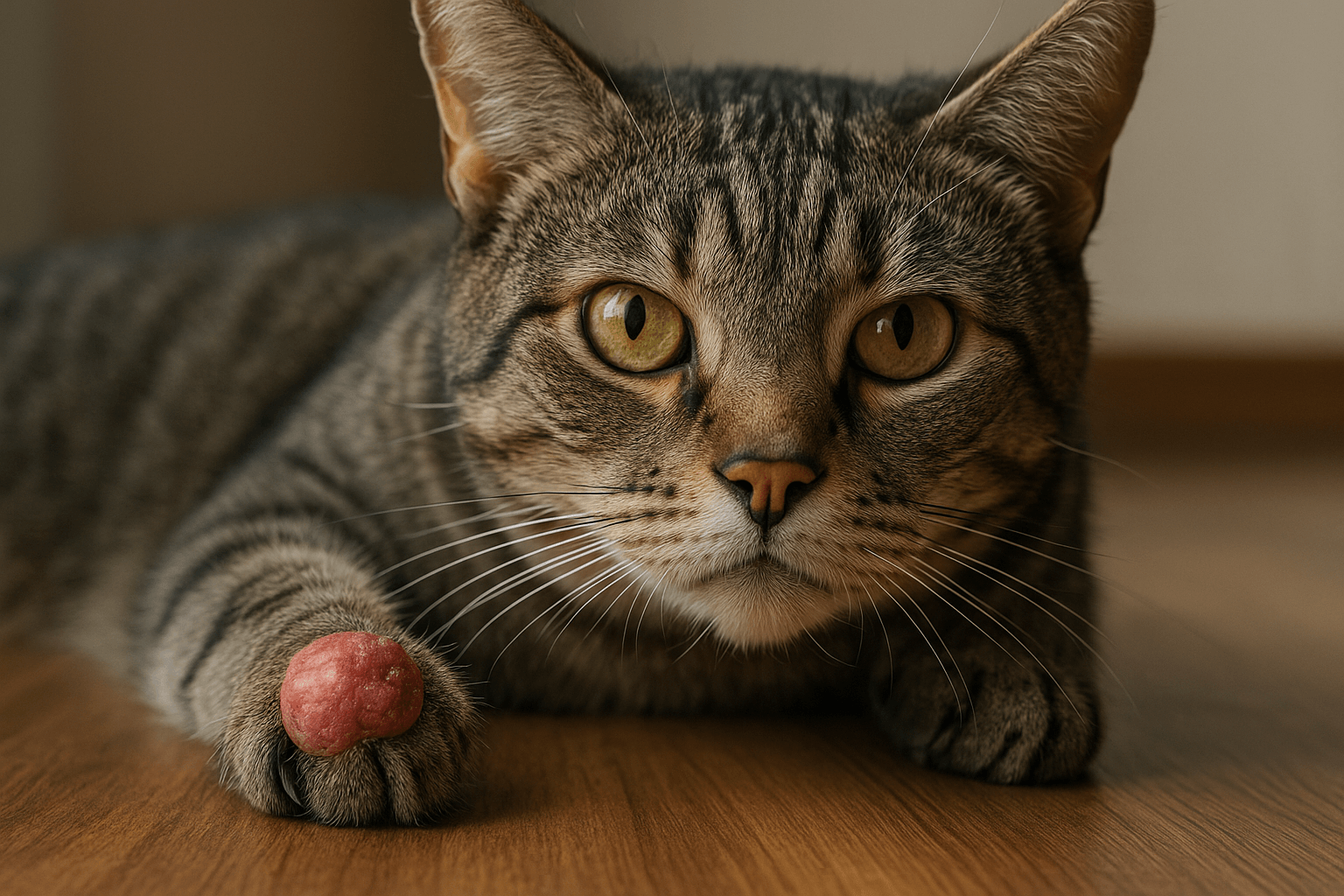Swollen Cat Ear: Causes, Symptoms, and Treatment Options
A swollen cat ear is not just a minor inconvenience—it can be a sign of an underlying issue that requires prompt attention. Cats rely heavily on their ears for balance, communication, and detecting their surroundings, so any discomfort or swelling can significantly impact their quality of life. From infections to allergies, there are several potential causes of this condition, each requiring a different approach to treatment. As a responsible pet owner, it’s essential to recognize the signs early and take the necessary steps to ensure your feline friend feels better soon.
In this guide, we’ll explore everything you need to know about swollen cat ears, from identifying symptoms to managing care at home.
What’s Behind the Swelling? Understanding the Root Causes
A swollen ear in cats can stem from a variety of issues, ranging from minor irritations to more serious health concerns. Identifying the underlying cause is the first step toward effective treatment. Here are some common culprits:
Ear Infections :
Bacterial or yeast infections are frequent causes of ear swelling and discomfort.Allergies :
Food or environmental allergies can lead to inflammation and irritation in the ear.Ear Mites :
These tiny parasites burrow into the ear canal, causing intense itching and swelling.Trauma or Injury :
Scratches, bites, or foreign objects lodged in the ear can result in swelling.Hematoma :
A blood-filled pocket under the skin, often caused by excessive scratching or head shaking.
Understanding these potential causes will help you determine whether a vet visit is necessary. Always err on the side of caution when dealing with ear issues, as untreated problems can worsen quickly.
Signs Your Cat May Have an Ear Problem
Cats are masters at hiding discomfort, but certain symptoms can alert you to a swollen ear or related issue. Being vigilant about changes in behavior or appearance can help you catch the problem early. Here’s what to look out for:
Redness or Swelling :
Visible puffiness or discoloration around the ear flap or canal.Excessive Scratching :
Frequent pawing at the ear may indicate irritation or pain.Head Shaking :
Cats often shake their heads to relieve discomfort caused by ear issues.Foul Odor :
A strong, unpleasant smell emanating from the ear could signal infection.Discharge or Debris :
Yellow, brown, or bloody discharge may point to an underlying problem.
If you notice any of these symptoms, it’s crucial to act promptly. Early intervention can prevent complications and ensure your cat’s speedy recovery.
Check this guide 👉Understanding Cat Ear Hematomas: Best 7 Expert Tips!
Check this guide 👉Understanding Cat Ear Yeast Infections: Best 7 Health Tips!
Check this guide 👉Understanding Cat Ear Polyps: Best 7 Expert Tips!

Preventive Measures | Treatment Options |
|---|---|
Regular ear cleaning and inspection | Prescription ear drops or ointments |
Keeping your cat indoors | Oral antibiotics for severe infections |
Using hypoallergenic food | Anti-inflammatory medications |
Checking for pests like ear mites | Surgical drainage for hematomas |
Avoiding exposure to irritants | Pain relief medication for comfort |
Supporting Your Cat’s Recovery with Proper Home Care
While professional veterinary care is essential for treating a swollen cat ear, there are steps you can take at home to support your cat’s healing process. Proper aftercare ensures the best possible outcome and minimizes the risk of recurrence.
Keep the Ear Clean :
Gently clean the outer ear with a vet-recommended solution to remove debris.Avoid Inserting Objects :
Never use cotton swabs or other tools inside the ear canal, as this can worsen the issue.Monitor Progress Daily :
Keep an eye on improvements or worsening symptoms and report changes to your vet.Provide a Stress-Free Environment :
Minimize noise and disturbances to help your cat rest and recover.Administer Medications as Directed :
Follow your vet’s instructions carefully when applying treatments.
By following these tips, you can create a healing-friendly environment for your cat. Consistency and attention to detail are key to a smooth recovery.
Steps to Protect Your Cat’s Ear Health
Prevention is always better than cure when it comes to swollen cat ears. Taking proactive steps can significantly reduce the risk of your cat developing this painful condition. Here’s how you can safeguard their ear health:
Schedule Regular Vet Check-Ups :
Routine exams help catch potential issues before they escalate.Maintain a Clean Environment :
Keep your home free of dust, allergens, and pests like ear mites.Feed a Balanced Diet :
Proper nutrition supports overall immune health, reducing susceptibility to infections.Inspect Ears Regularly :
Check your cat’s ears weekly for signs of redness, swelling, or unusual discharge.Use Preventive Treatments :
Flea and tick preventatives can reduce the risk of parasite-related ear issues.
By incorporating these practices into your routine, you can help protect your cat’s ears and overall well-being. Prevention starts with awareness and consistent care.
Why Early Treatment is Crucial for Swollen Cat Ears
Ignoring a swollen cat ear can lead to serious complications that may affect your cat’s overall health and well-being. Understanding these potential outcomes underscores the importance of seeking prompt veterinary care. Here are some risks associated with untreated ear issues:
Chronic Ear Infections :
Untreated infections can become recurring, leading to long-term discomfort and damage.Hearing Loss :
Prolonged swelling or infection may impair your cat’s ability to hear properly.Spread of Infection :
Bacterial or fungal infections can spread to other parts of the body, causing systemic illness.Behavioral Changes :
Persistent pain or discomfort may lead to irritability, aggression, or withdrawal.Permanent Deformity :
Severe hematomas or injuries can result in scarring or deformities of the ear flap.
These complications highlight why early intervention is essential. Always prioritize professional care to protect your cat’s health and happiness.
Helping Your Cat Stay Comfortable and Stress-Free
Recovering from a swollen ear isn’t just a physical challenge—it can also be emotionally taxing for your cat. Providing emotional support can make the healing process smoother for both of you. Here are some ways to comfort your feline friend:
Offer Extra Affection :
Spend quality time with your cat to reassure them and reduce anxiety.Create a Calm Space :
Designate a quiet, comfortable area where your cat can rest undisturbed.Use an Elizabethan Collar :
Prevent your cat from pawing at or scratching their ear during healing.Maintain Routine :
Stick to regular feeding and play schedules to provide stability.Provide Soft Bedding :
Ensure your cat has cozy bedding to rest comfortably.
A calm and loving atmosphere can significantly aid your cat’s recovery. Remember, your presence and care mean the world to them during this vulnerable time.
How to Tell If Your Cat’s Ear Is Healing Properly
As your cat recovers from a swollen ear, it’s important to monitor their progress closely. Recognizing signs of improvement can give you peace of mind and help you identify any lingering issues. Here’s what to look for:
Reduced Swelling :
The ear flap or canal will appear less puffy and return to its normal shape.Decreased Scratching :
Your cat will stop pawing at their ear as frequently, indicating reduced irritation.Improved Appetite :
A recovering cat is more likely to eat normally and regain energy.Clearer Discharge :
Any discharge from the ear will diminish or disappear entirely.Return to Normal Behavior :
Your cat will resume playful or relaxed activities without signs of discomfort.
These positive changes are indicators that your cat is on the mend. However, if symptoms persist or worsen, consult your vet immediately to ensure proper healing.
Frequently Asked Questions About Swollen Cat Ears
Can I treat my cat’s swollen ear at home without seeing a vet?
Mild cases may improve with home care, but it’s best to consult a vet to rule out serious conditions.
How long does it take for a swollen ear to heal?
With proper treatment, mild cases typically resolve within 1–2 weeks, while severe cases may take longer.
Are certain breeds more prone to ear problems?
Yes, cats with folded ears (like Scottish Folds) or long-haired breeds are more susceptible due to reduced airflow.
What should I do if my cat keeps scratching their ear?
Consult your vet immediately, as persistent scratching can worsen the issue or indicate an underlying problem.
Can ear mites spread to other pets?
Yes, ear mites are highly contagious and can infect other animals in the household.
Final Thoughts: Prioritizing Your Cat’s Ear Health
A swollen cat ear is more than just a cosmetic issue—it’s a sign that something may be wrong beneath the surface. By staying informed about the causes, symptoms, and treatments, you can ensure your furry companion receives the care they need. Remember, prevention and early detection are key to maintaining your cat’s quality of life. With your love and vigilance, your cat can enjoy many more happy, healthy years by your side. So the next time you notice your cat scratching their ear or shaking their head, don’t hesitate—take action and give them the care they deserve.
Cuterebra Larvae in Cats: Best 7 Expert Tips! – Expert advice on signs, treatment & prevention of this rare but serious feline parasitic infestation.
Cuterebra Larvae in Dogs: Best 7 Expert Tips! – Expert advice on signs, treatment & prevention of this rare but serious parasitic infestation.
Cat Tumor on Paw: Best 7 Expert Tips! – Expert advice on signs, diagnosis, treatment & care for feline paw tumors.
Panacur Side Effects in Dogs: Best 7 Expert Tips! – Safe usage, common reactions & when to call the vet.





